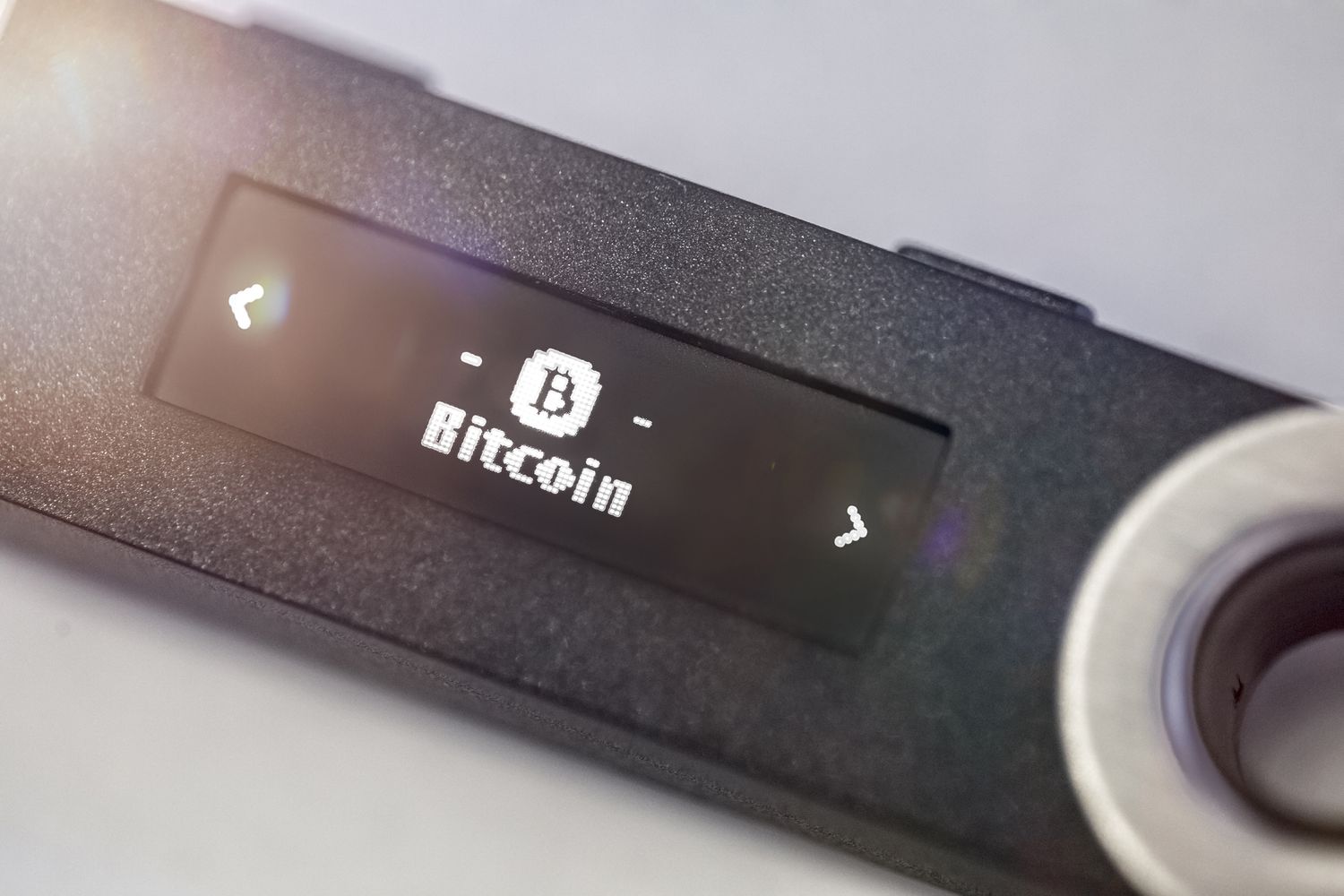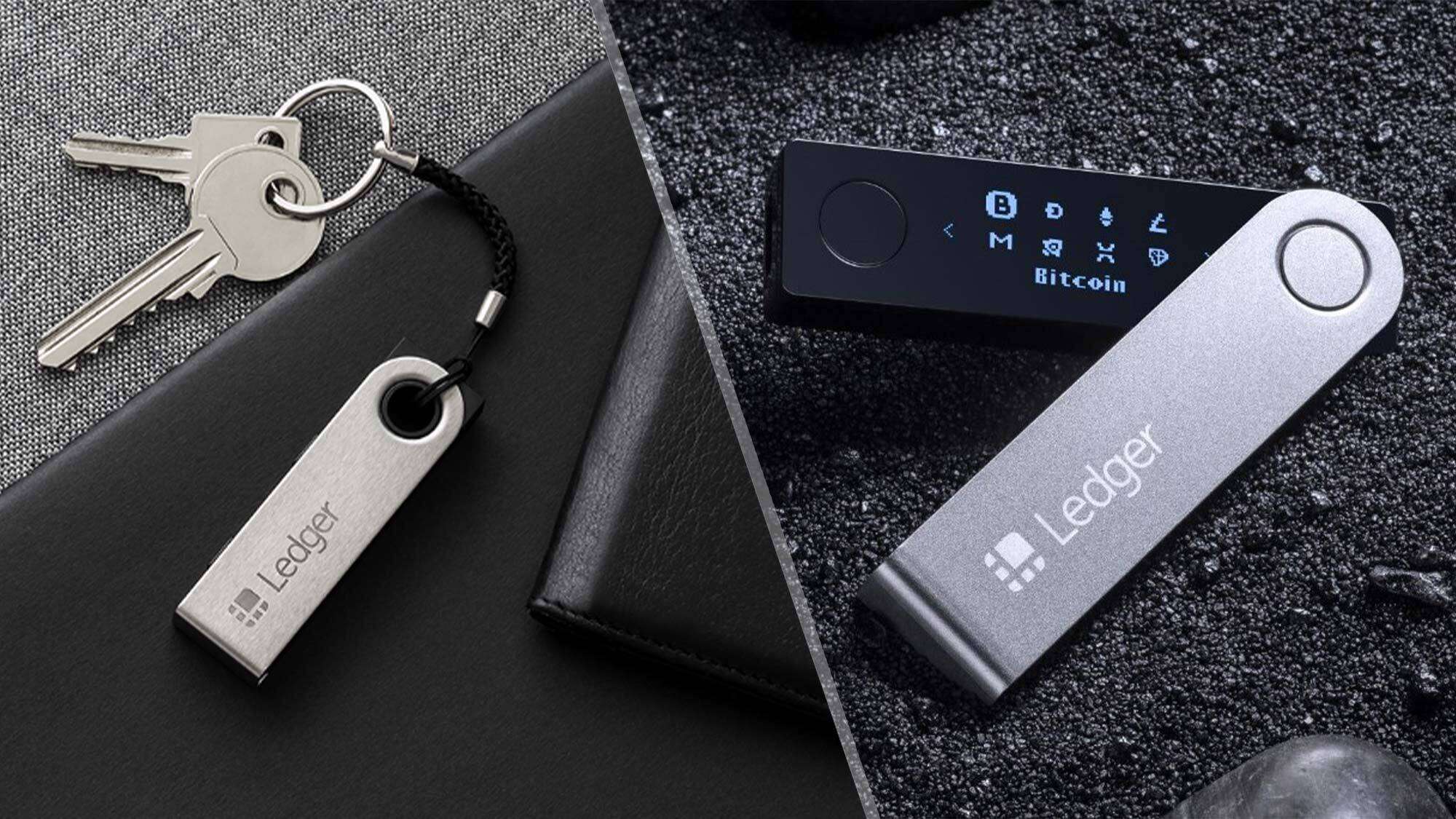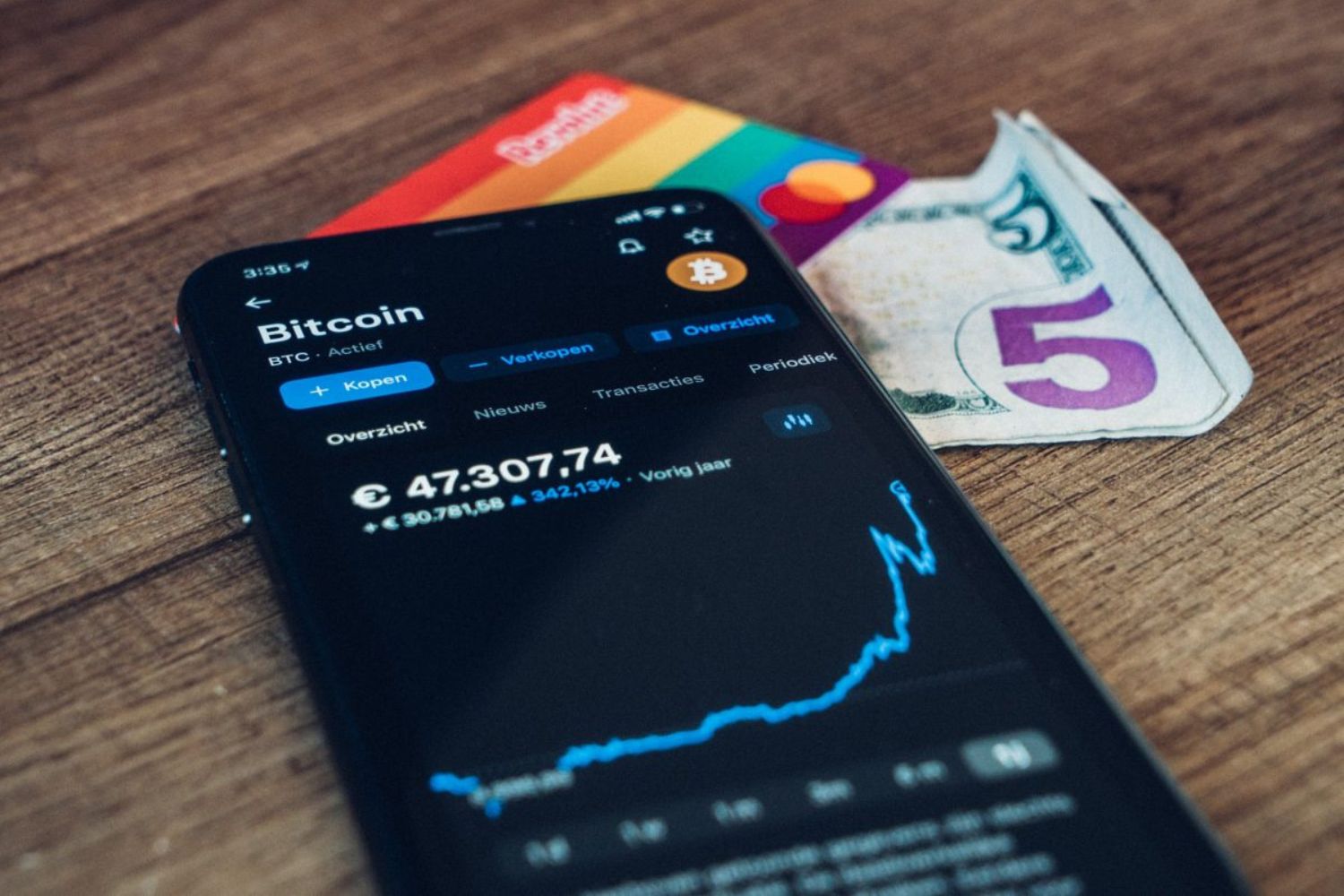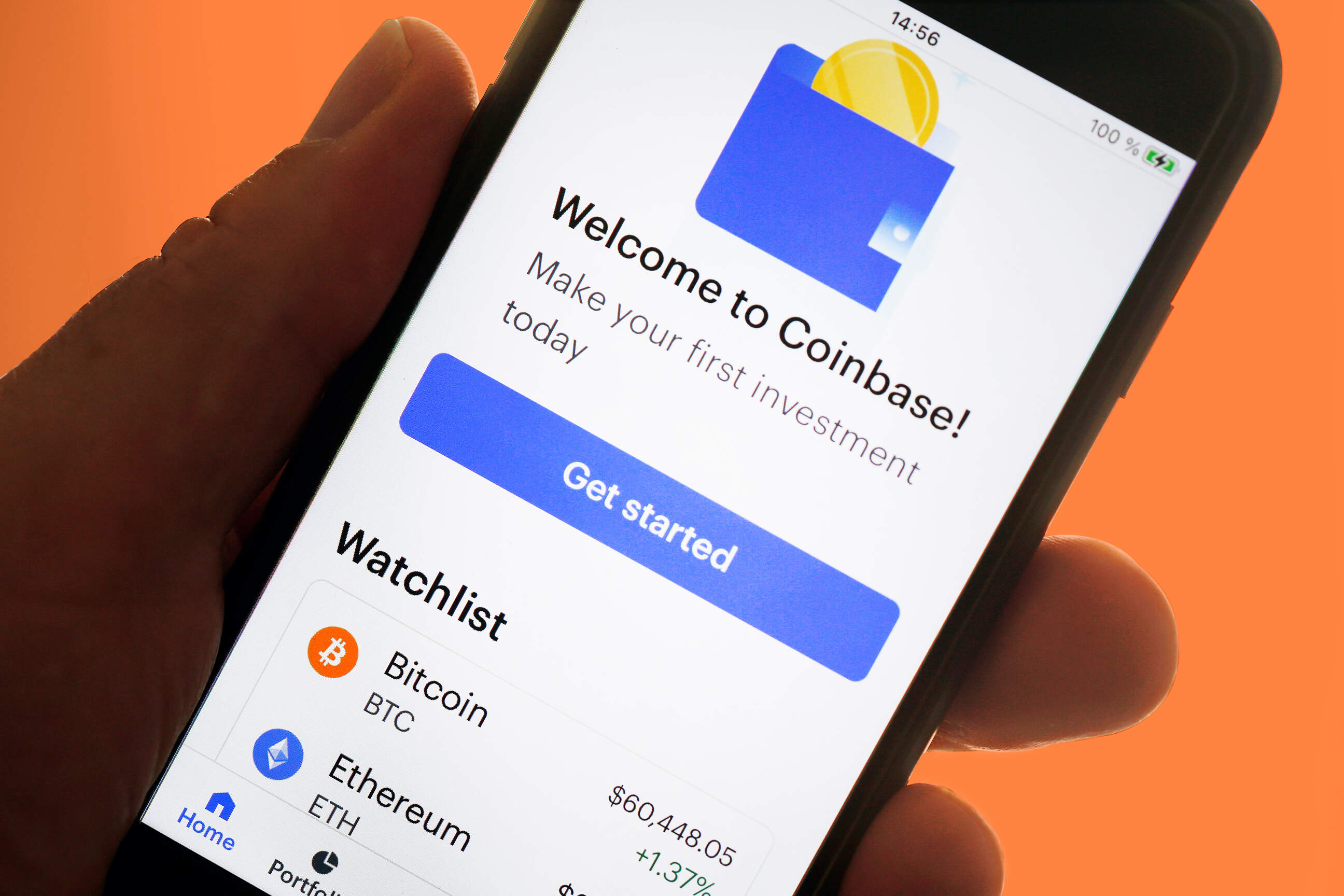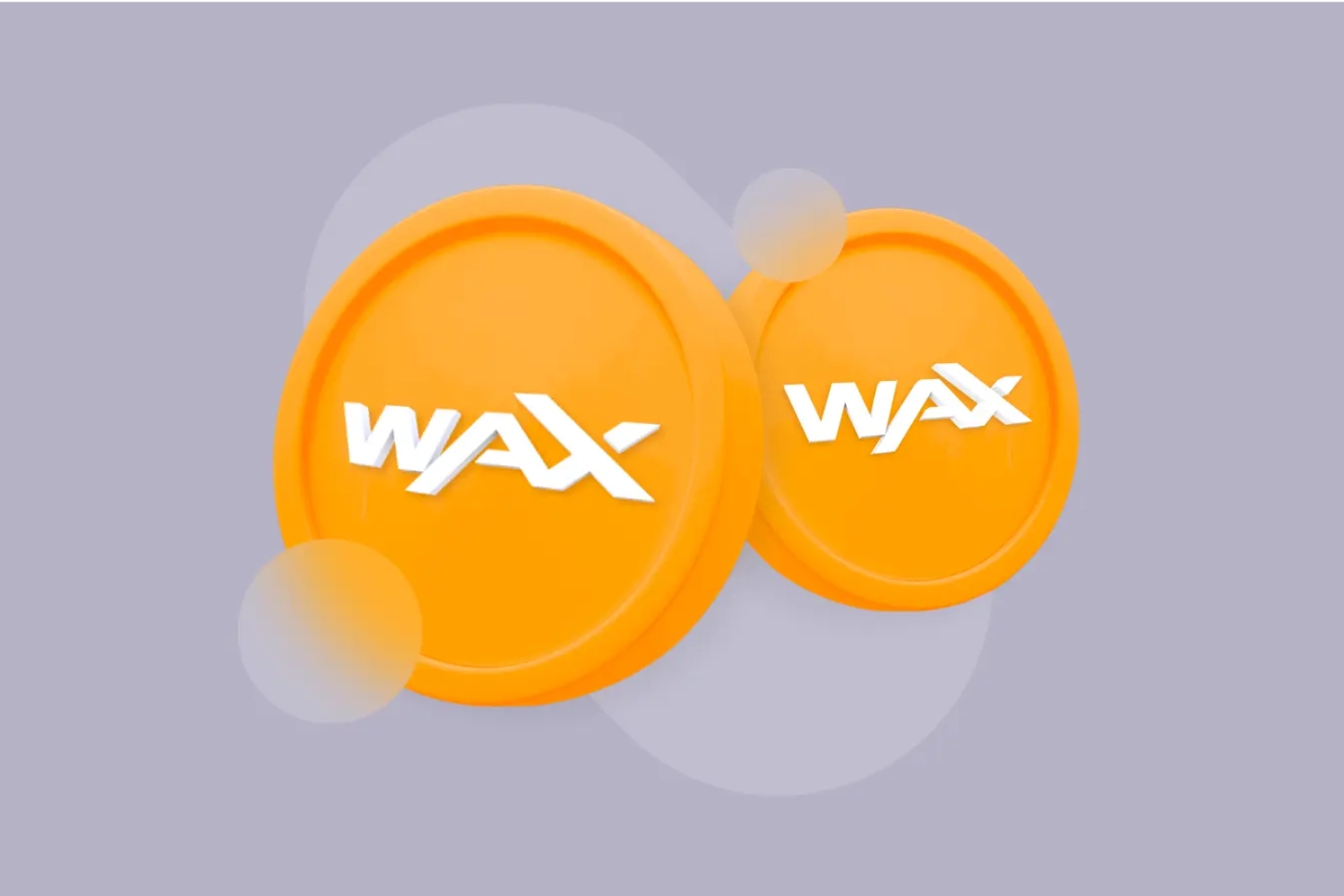Introduction
Welcome to the exciting world of cryptocurrencies! As an investor or enthusiast, you’ve likely heard about the importance of securely storing your crypto assets. With the decentralized nature of cryptocurrencies and the potential risks associated with online threats, protecting your digital wealth should be a top priority.
While cryptocurrencies offer incredible opportunities for financial growth and innovation, they also pose unique challenges when it comes to security. Unlike traditional banking systems, where your funds are protected by established institutions, cryptocurrencies require individuals to take personal responsibility for the safety of their assets.
In this article, we will explore the various methods and best practices for safely storing your crypto. Whether you’re new to the world of cryptocurrencies or an experienced trader, understanding how to store your digital assets securely is crucial to safeguarding your investments.
From choosing the right wallet to implementing multi-factor authentication and offline storage solutions, we’ll cover everything you need to know to ensure the security of your crypto holdings. So let’s dive in and learn how to store your crypto assets like a pro!
Choosing a Wallet
When it comes to storing your cryptocurrencies, choosing the right wallet is the first step towards ensuring the security of your digital assets. There are several types of wallets available, each offering different levels of security and convenience.
The two main categories of wallets are hardware wallets and software wallets. Hardware wallets are physical devices that store your private keys offline, providing a high level of security. Some popular hardware wallet brands include Ledger, Trezor, and KeepKey.
On the other hand, software wallets are digital applications that can be installed on your computer or mobile device. While software wallets are generally more convenient to use, they may not offer the same level of security as hardware wallets. Popular software wallet options include Exodus, Electrum, and MyEtherWallet.
When choosing a wallet, consider factors such as the type of cryptocurrencies you want to store, ease of use, compatibility with your device, and the wallet’s reputation for security. It’s important to research and read reviews to ensure you choose a reputable and trustworthy wallet provider.
Additionally, some wallets offer features like multi-signature functionality, which requires multiple private keys to authorize transactions. This adds an extra layer of security, as it ensures that no single individual can access your funds without the consent of all parties involved.
Remember, the choice of wallet ultimately depends on your personal preferences and security requirements. It’s crucial to thoroughly understand the features and limitations of any wallet you choose, as well as how to properly set it up and use it securely.
In the next section, we’ll explore best practices for securing your private keys, a fundamental aspect of safely storing your cryptocurrencies.
Securing Your Private Keys
Private keys are at the core of cryptocurrency security. They are essentially the digital signature that allows you to access and control your crypto assets. Therefore, protecting your private keys is paramount to keeping your cryptocurrencies safe.
The first rule of thumb is to never share your private keys with anyone. Your private keys should remain confidential and for your eyes only. Sharing them with others, even with trusted individuals, can expose your funds to potential theft or unauthorized access.
One way to safeguard your private keys is to store them offline. Offline storage methods, also known as cold storage, ensure that your private keys are not connected to the internet, making it significantly more difficult for attackers to compromise them.
There are several cold storage options available, including hardware wallets, paper wallets, and even offline hardware devices like USB drives. These methods provide an extra layer of protection by keeping your private keys physically isolated from online threats.
Another crucial aspect of securing your private keys is to regularly back them up. Losing access to your private keys can result in permanent loss of your crypto assets. By keeping backups in multiple secure locations, such as encrypted USB drives or encrypted cloud storage, you can mitigate the risk of losing your private keys.
It’s important to note that you should never store your private keys on your computer or device in plain text format. Instead, use encryption tools to encrypt your private keys before saving them on any digital storage medium.
Furthermore, consider using strong and unique passwords for your wallets and avoid reusing passwords across different platforms. Using a password manager can help you generate and manage complex passwords securely.
In the next section, we’ll explore more advanced storage options, including hardware wallets, which offer additional security features for protecting your crypto holdings.
Cold Storage Methods
Cold storage refers to the practice of keeping your cryptocurrencies offline, away from internet-connected devices. By storing your crypto assets in cold storage, you can significantly reduce the risk of them being compromised by online threats.
There are several cold storage methods you can employ to safeguard your digital assets:
- Hardware Wallets: Hardware wallets are physical devices specifically designed to store cryptocurrencies securely. These wallets store your private keys offline, providing an extra layer of protection. Some popular hardware wallet brands include Ledger, Trezor, and KeepKey. These devices typically require a PIN or passphrase to access the stored funds.
- Paper Wallets: Paper wallets are physical printouts that contain your public and private keys in the form of QR codes or alphanumeric characters. You can generate a paper wallet offline, ensuring that your keys are never exposed to the internet. However, it’s crucial to keep your paper wallet in a safe and secure location, as anyone who gains access to it can potentially steal your funds.
- Offline Hardware Devices: In addition to hardware wallets and paper wallets, there are also dedicated offline hardware devices available for cold storage. These devices are often USB-based and designed to securely store your private keys offline. They offer enhanced security features and can be a viable option for those seeking an extra layer of protection.
- Offline Computers: Another cold storage method involves using a computer that is never connected to the internet. By installing a wallet application on this offline computer, you can generate and store private keys without exposing them to online threats. However, this method requires advanced technical knowledge and caution, as any online connection to the computer can compromise the security of your offline keys.
When implementing cold storage methods, it’s crucial to keep backups of your private keys in secure and redundant locations. Store them in multiple physical and encrypted digital copies, ensuring that you can regain access to your funds if one backup is lost or damaged.
While cold storage provides excellent security, it’s important to note that it may sacrifice some convenience. Accessing and managing your crypto assets stored in cold storage can take more time and effort compared to wallets connected to the internet. Therefore, it’s essential to strike a balance between security and usability that aligns with your specific needs.
In the next section, we’ll explore the use of hardware wallets as a popular and highly secure cold storage option.
Using Hardware Wallets
One of the most secure ways to store cryptocurrencies is by using hardware wallets. These physical devices provide an extra layer of protection by storing your private keys offline, away from potential online threats. Let’s explore the advantages and best practices of using hardware wallets for storing your digital assets.
Advantages of Hardware Wallets:
- Enhanced Security: Hardware wallets are designed with advanced security features that make them highly resistant to hacking attempts. They offer secure chip technology and encryption to protect your private keys from being exposed.
- Offline Storage: By keeping your private keys on a hardware wallet, you ensure they never come into contact with the internet. This greatly reduces the risk of cyberattacks or malware compromising your keys.
- User-Friendly: Hardware wallets are designed to be user-friendly, with intuitive interfaces and easy setup processes. They often come with clear instructions and support for multiple cryptocurrencies.
- Multi-Factor Authentication: Many hardware wallets provide an extra layer of security through the use of built-in authentication methods such as PIN codes or biometric sensors. This ensures that only authorized individuals can access your funds.
- Compatibility: Hardware wallets are compatible with various wallet software and online platforms. You can easily connect them to your computer or mobile device to manage and transact with your cryptocurrencies.
Best Practices for Using Hardware Wallets:
- Buy From Official Sources: To ensure the authenticity and integrity of your hardware wallet, always purchase from official sources or authorized resellers.
- Set Strong PINs and Passphrases: When setting up your hardware wallet, use strong alphanumeric PINs and consider enabling a passphrase feature for an additional layer of security.
- Regular Firmware Updates: Keep your hardware wallet’s firmware up to date to benefit from the latest security patches and improvements.
- Keep Your Recovery Seed Offline: During the initial setup process, you’ll be provided with a recovery seed, a series of words that can be used to restore access to your funds in case your hardware wallet is lost or damaged. Make sure to write down the recovery seed and store it in a secure offline location.
- Verify Receiving Addresses: Before sending any funds, always verify the receiving address displayed on the hardware wallet’s screen. This prevents sending funds to incorrect or malicious addresses.
- Practice Safe Backup: Create multiple backups of your recovery seed, keeping them in separate secure locations. Consider using encrypted storage options or even offline physical backups.
By following these best practices, you can maximize the security provided by hardware wallets, ensuring the safe storage and management of your cryptocurrencies.
In the next section, we’ll explore the importance of backing up your wallet, regardless of the storage method you choose.
Backing Up Your Wallet
One of the most critical aspects of securely storing your cryptocurrencies is regularly backing up your wallet. Whether you’re using a hardware wallet, software wallet, or any other storage method, having a reliable backup ensures that you can recover your funds in case of loss, theft, or damage. Let’s explore the importance of backing up your wallet and the best practices to follow.
Why Is Backing Up Your Wallet Important?
A wallet backup is essentially a copy of your wallet’s private keys, which are used to access and control your cryptocurrencies. Without a backup, losing access to your wallet could result in the permanent loss of your funds. Common scenarios where a backup can save the day include:
- Hardware Failure: If your hardware wallet or device gets damaged, malfunctions, or is lost, having a backup allows you to restore your wallet on a new device.
- Loss or Theft: In the unfortunate event that your physical wallet is lost or stolen, having a backup ensures that you can regain access to your funds without them falling into the wrong hands.
- User Error: Accidental deletion, software corruption, or mistakenly resetting your wallet can all lead to loss of data. With a backup, you can always restore your wallet and recover your funds.
Best Practices for Backing Up Your Wallet:
- Multiple Locations: Create multiple backups of your wallet and store them in different physically secure locations. This ensures that even if one backup is compromised or damaged, you have another one as a fail-safe.
- Offline Storage: Keep at least one backup stored offline, away from internet-connected devices. This protects your backup from being accessed by hackers or online threats.
- Encryption: Consider encrypting your wallet backups to add an extra layer of security. Encrypted backups require a passphrase to access the private keys, making them more resistant to unauthorized access.
- Regular Updates: Whenever you make significant changes to your wallet, such as adding new accounts or generating new addresses, remember to create a fresh backup. Regularly updating your backups ensures that you have the most up-to-date version of your wallet data.
- Test the Backup: Periodically test the restoration process using your backup to ensure that you can successfully recover your wallet and access your funds. It’s better to be safe than sorry.
By following these best practices, you significantly reduce the risk of losing access to your wallet and funds. Remember, backing up your wallet is an ongoing process, so make it a habit to create backups regularly and ensure the safety of your cryptocurrencies.
In the next section, we’ll explore the importance of two-factor authentication (2FA) in securing your wallet.
Two-Factor Authentication
Implementing two-factor authentication (2FA) is an effective way to enhance the security of your wallet and protect your cryptocurrencies from unauthorized access. By adding an extra layer of verification, 2FA adds an additional security barrier, making it challenging for attackers to compromise your account. Let’s dive into why two-factor authentication is important and how to set it up for your wallet.
Why Is Two-Factor Authentication Important?
Two-factor authentication adds an extra layer of security by requiring two different forms of verification to access your account. This typically involves something you know, such as a password, and something you have, such as a unique code generated by an authentication app or sent to your mobile device.
By using 2FA, even if your password is compromised, an attacker still cannot access your wallet without the second factor of authentication. This greatly reduces the risk of unauthorized access, as an attacker would need both your password and the second verification factor to gain entry.
How to Set Up Two-Factor Authentication:
Setting up 2FA depends on the specific wallet or platform you’re using, but the general steps are as follows:
- Choose an Authentication App: Install a reputable authenticator app on your mobile device, such as Google Authenticator or Authy. This app will generate unique codes for your 2FA verification.
- Enable 2FA: Log in to your wallet or platform, go to the security settings, and enable two-factor authentication. You may need to scan a QR code with your authenticator app to link it with your account.
- Backup Your 2FA Codes: During the setup process, you’ll often be provided with recovery codes or a backup key. Make sure to securely store these codes in a safe and offline location, as they can be used to regain access to your account if you lose your mobile device.
- Verify the Setup: Once enabled, perform a test authentication by entering the verification code generated by your authenticator app. This ensures that the setup was successful and that you can access your wallet using 2FA.
Remember to keep your mobile device secure and protected with a strong password or biometric locking mechanism. Losing your device or having it stolen could potentially expose your 2FA codes to unauthorized individuals.
Best Practices for Two-Factor Authentication:
- Use 2FA Everywhere: Whenever possible, enable two-factor authentication for all your crypto-related accounts, including exchanges, wallets, and trading platforms.
- Regularly Update Your Authenticator App: Keep your authenticator app up to date to benefit from the latest security enhancements and bug fixes.
- Backup Your 2FA Codes: Take the time to backup your 2FA recovery codes or backup keys. Store them securely and offline in case you need to restore access to your account.
- Be Prepared for Device Loss: Plan ahead by noting down the process for recovering your 2FA access if your device is lost or stolen. Follow the recovery procedures provided by the wallet or platform to regain access.
By implementing two-factor authentication, you significantly enhance the security of your wallet and reduce the risk of unauthorized access to your cryptocurrencies.
In the next section, we’ll discuss the importance of being aware of phishing attacks and how to protect yourself from such fraudulent attempts.
Beware of Phishing Attacks
Phishing attacks are a common method used by hackers to gain unauthorized access to sensitive information, including your cryptocurrency wallet credentials. Being aware of phishing attempts and taking the necessary precautions is crucial to protect yourself from falling victim to these fraudulent schemes.
What is a Phishing Attack?
In a phishing attack, cybercriminals disguise themselves as trustworthy entities, such as popular exchanges, wallet providers, or financial institutions, to trick individuals into revealing their login credentials or other sensitive information. Phishing attacks are often conducted through deceptive emails, fake websites, or text messages.
How to Protect Yourself from Phishing Attacks:
Here are some essential steps to help you avoid falling victim to phishing attacks:
- Be Vigilant and Skeptical: Be cautious when receiving unsolicited emails or messages asking for personal or financial information. Avoid clicking on suspicious links or downloading attachments from unknown sources.
- Verify Website URLs: Before entering any login credentials or personal information on a website, double-check the URL to ensure it matches the official address of the legitimate organization. Insecure or misspelled URLs are often red flags of a phishing attempt.
- Enable Security Notifications: Many wallets and exchanges offer security notifications via email or text message. Enable these notifications to stay informed about any suspicious activity or login attempts on your account.
- Use Two-Factor Authentication (2FA): Implementing 2FA adds an extra layer of security, making it more challenging for attackers to gain access to your account even if they have your login credentials.
- Keep Software Up to Date: Regularly update your wallet software, antivirus software, and operating system to patch any vulnerabilities that cybercriminals may exploit.
- Use Antivirus and Anti-Malware Software: Install reputable antivirus and anti-malware software on your devices to detect and block any attempts to infiltrate your system with malicious software.
- Educate Yourself: Stay informed about the latest phishing techniques and trends. Educate yourself on how to identify phishing attempts and regularly remind yourself of the best practices for online security.
Remember, legitimate organizations will never ask for your password or private keys through email or other insecure channels. If you receive a suspicious message, report it to the official support channels of the organization to verify its authenticity.
By being vigilant and taking the necessary precautions, you can protect yourself from falling victim to phishing attacks and keep your cryptocurrency wallet secure.
In the next section, we’ll discuss the importance of encrypting your wallet and the role it plays in safeguarding your digital assets.
Encrypting Your Wallet
Encrypting your wallet is an essential step in securing your digital assets and protecting them from unauthorized access. By encrypting your wallet, you add an extra layer of protection to your private keys and ensure that even if someone gains access to your wallet file, they won’t be able to access your funds. Let’s explore the importance of wallet encryption and how to encrypt your wallet effectively.
Why Is Encrypting Your Wallet Important?
Encrypting your wallet provides an additional level of security by scrambling the contents of your wallet file, making it unreadable to anyone who doesn’t have the encryption passphrase. This is especially important if someone gains unauthorized access to your computer or if your wallet file is stolen.
Without encryption, an attacker who gains access to your wallet file can easily retrieve your private keys and gain control over your cryptocurrencies. Encrypting your wallet ensures that your private keys remain secure, even if other security measures are compromised.
How to Encrypt Your Wallet:
The process of encrypting your wallet may vary depending on the wallet software you are using. However, the general steps are as follows:
- Backup Your Wallet: Before encrypting your wallet, always create a backup of your wallet file. This ensures that if something goes wrong during the encryption process, you can restore your wallet and access your funds with the backup file.
- Open the Wallet Application: Launch your wallet application and navigate to the settings or security section of the software. Look for the option to enable encryption or set a wallet passphrase.
- Set a Strong Passphrase: Choose a strong and unique passphrase for your wallet encryption. The passphrase should be a combination of alphanumeric characters, symbols, and should be difficult for others to guess. Remember to never use the same passphrase as your other online accounts.
- Confirm and Save the Passphrase: Once you’ve set your passphrase, confirm it and save it in a secure location. Make sure to store it separately from your wallet file and encryption backups.
- Restart and Test: After encrypting your wallet, restart the wallet application and test accessing your funds by entering the passphrase. Ensure that you can decrypt and access your wallet successfully.
Remember to enter your passphrase every time you want to send funds or make changes to your wallet. Encryption protects your wallet file from unauthorized access, but it can also make recovery difficult if you forget or lose your passphrase. It’s important to choose a strong passphrase and keep it secure.
Additional Security Measures:
In addition to wallet encryption, consider using a strong system password for your computer or device. This provides an extra layer of protection against unauthorized access to your wallet file.
Furthermore, consider storing your encrypted wallet backups in secure locations, such as encrypted USB drives or offline storage devices. This further reduces the risk of compromising your wallet and private keys.
By encrypting your wallet, you add an important layer of security to protect your digital assets. It ensures that even if someone gains access to your wallet file, your funds remain safe and secure.
In the next section, we’ll explore safe online storage options for storing your backups and securely accessing your cryptocurrencies from various devices.
Safe Online Storage Options
Safe online storage options provide convenient and secure ways to store your wallet backups and access your cryptocurrencies from various devices. These services offer encrypted storage, backup solutions, and additional security measures to protect your digital assets. Let’s explore some safe online storage options and their benefits.
Cloud Storage Providers:
Cloud storage providers like Google Drive, Dropbox, and iCloud offer encrypted storage solutions for your wallet backups. These services allow you to upload and sync your wallet backup files, ensuring that they are securely stored in the cloud. By using cloud storage, you can easily access your backups from multiple devices and locations. However, it’s important to choose a reputable cloud storage provider and enable two-factor authentication on your account for added security.
Encrypted External Storage:
If you prefer to have physical control over your wallet backups, you can use encrypted external storage devices like USB drives or external hard drives. These devices allow you to store your wallet backups offline, away from potential online threats. Some hardware wallets also provide the option to export encrypted wallet backups directly to external storage devices, ensuring that your backups are stored securely.
Hardware Solutions:
There are specialized hardware solutions available that combine offline storage and cloud backup features. These devices offer built-in encryption, secure backup functionality, and the convenience of cloud storage. Companies like Glacier Protocol and Coldcard offer hardware solutions specifically designed for securely storing wallet backups and managing digital assets.
Considerations for Online Storage:
While online storage options provide convenience and accessibility, it’s important to keep the following considerations in mind:
- Choose Reputable Providers: Select trusted and reputable online storage providers that prioritize security and encryption to maximize the protection of your wallet backups.
- Enable Strong Security Measures: Implement additional security measures, such as two-factor authentication, strong passwords, and encryption features offered by the online storage provider.
- Regularly Update and Test Backups: Ensure that your wallet backups are up to date and regularly test the restoration process to confirm that you can successfully recover your wallet from the online storage.
- Store Backups in Multiple Locations: Consider creating redundant copies of your wallet backups and storing them in separate secure locations, such as both online and offline storage mediums.
- Encrypt Your Backups: Before uploading your wallet backups to online storage, consider encrypting them with a strong passphrase or using the encryption features provided by the storage service.
By utilizing safe online storage options, you can securely store your wallet backups, access your cryptocurrencies from different devices, and have peace of mind knowing your digital assets are protected.
In this article, we have explored various methods, strategies, and best practices for storing your cryptocurrencies securely. From choosing the right wallet to securing your private keys, implementing two-factor authentication, and being cautious of phishing attacks, these practices will help you protect your valuable digital assets. Remember, the safety and security of your cryptocurrencies are ultimately in your hands, so take the necessary precautions to ensure their protection.
Conclusion
Securely storing your cryptocurrencies is of utmost importance in today’s digital landscape. By following the methods and best practices discussed in this article, you can enhance the security of your digital assets and mitigate the risk of unauthorized access or loss. Here’s a quick recap of the key points we covered:
Choose the Right Wallet: Select a wallet that meets your security needs and is compatible with the cryptocurrencies you want to store.
Secure Your Private Keys: Keep your private keys offline and regularly back them up in secure and redundant locations.
Utilize Cold Storage Methods: Consider using hardware wallets, paper wallets, or offline hardware devices to store your cryptocurrencies offline, away from potential online threats.
Use Hardware Wallets: Hardware wallets offer enhanced security features and are a popular choice for storing cryptocurrencies securely.
Backup Your Wallet: Regularly create backups of your wallet to avoid the risk of permanent loss due to hardware failure, loss, or theft.
Implement Two-Factor Authentication: Enable 2FA to add an extra layer of security and protect your wallet from unauthorized access.
Stay Alert for Phishing Attacks: Be vigilant and cautious of phishing attempts, ensuring you never share your login credentials or private keys with anyone.
Encrypt Your Wallet: Encrypting your wallet adds an additional layer of protection by making your private keys unreadable to unauthorized individuals.
Consider Safe Online Storage: Utilize reputable cloud storage providers or encrypted external storage to securely store wallet backups and access your cryptocurrencies from different devices.
Remember that the security of your cryptocurrencies ultimately lies in your hands. Stay informed, keep your software and devices updated, and practice good security habits to safeguard your digital assets. By taking the necessary precautions, you can enjoy the benefits of cryptocurrencies while minimizing the risks.
So, go ahead and implement these strategies and best practices to store your cryptocurrencies like a pro!







